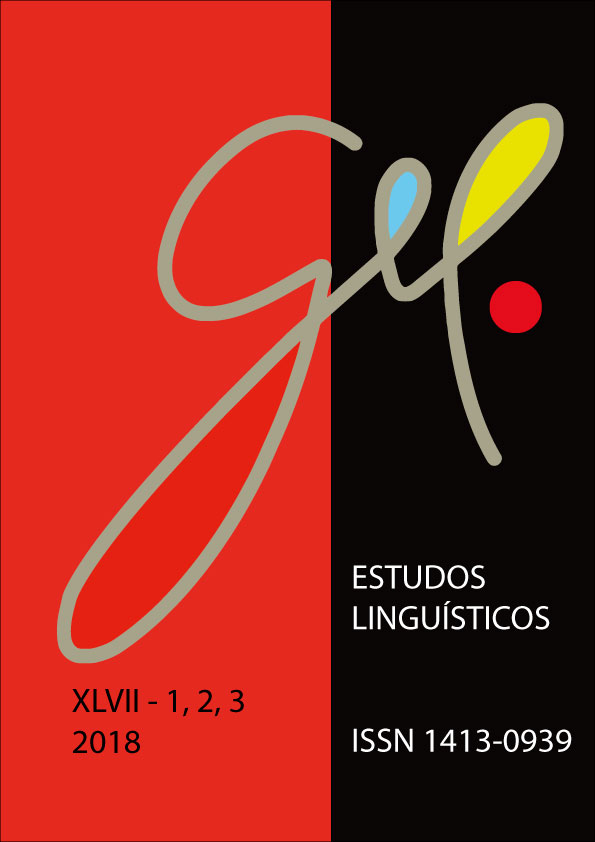Causality constructions usage from elementary education ll to college: from variation to topicalization of the conjunction “pois”
DOI:
https://doi.org/10.21165/el.v47i2.2029Keywords:
education, cognitive linguistics, portuguese language, causal conjunctionsAbstract
This paper deals with the analysis of constructs of cause, detailing the use of the conjunction pois. The corpus consists of 436 students, from regular courses, from the 6th year of elementary school to the graduation in Pedagogy and Literature, from different educational establishments in São Paulo city. The scope of the research is to verify, among the 8 groups, whether there is solidification of the abstract concept of causality and diversity in the use of conjunctions in the introduction of ideas of causality, as schooling increases. Thus, to the students a test was presented with five questions where it is required, in theory, different cognitive abilities. The conjunction “pois” appeared among the three most used constructions and as a synonym for “porque”, so much that there is great frequency in its topicalized use.Downloads
References
AZEREDO, J. C. de. Gramática Houaiss da língua portuguesa. São Paulo: Publifolha, 2013.
ROCHA LIMA, C. H. da. Gramática normativa da língua portuguesa. 51. ed. Rio de Janeiro: José Olympio, 2013.
MINISTÉRIO DA EDUCAÇÃO E CULTURA. Orientações curriculares para o ensino médio. Linguagens, códigos e suas tecnologias. Brasília: MEC. v. 1, 2006. Disponível em: <http://portal.mec.gov.br/seb/arquivos/pdf/book_volume_01_internet.pdf>. Acesso em: 02 abr. 2017.
MINISTÉRIO DA EDUCAÇÃO E CULTURA. Base Nacional Comum Curricular. Brasília: MEC. 2. ed. rev. 2016. Disponível em: <http://portal.mec.gov.br/index.php?option=com_docman&view=download&alias =40791-bncc-proposta-preliminar-segunda-versao-pdf&category_slug=maio-2016-pdf&Itemid=30192>. Acesso em: 02 abr. 2017.
NEVES, M. H. de M. Gramática de usos do português. 2. ed. São Paulo: Editora UNESP, 2011.
NEVES, M. H. de M. Intersubjetividade e interlocução nas relações de causalidade. A funcionalidade dos juntivos causais na língua portuguesa. Linguística, 30 (2), p. 113-140, dez. 2014. Instituto Presbiteriano Mackenzie/Universidade Estadual Paulista-Araraquara. Conselho Nacional de Desenvolvimento Científico e Tecnológico. Disponível em: <http://www.scielo.edu.uy/pdf/ling/v30n2/v30n2a06.pdf>. Acesso em: 25 jul. 2017.
TOMASELLO, M. Do young children have adult syntactic competence? Cognition, v. 74, p. 209-253, 2000. Disponível em: <http://www.sciencedirect.com/science/article/pii/S0010027799000694>. Acesso em: 07 jun. 2017.



